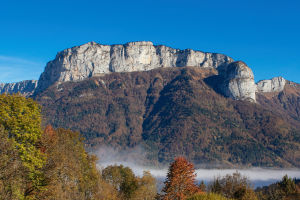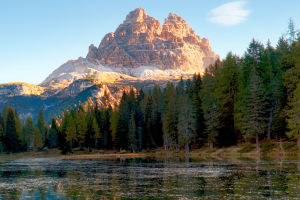Located in the remote plains of San Agustin, New Mexico, the Very Large Array (VLA) is one of the world's premier astronomical radio observatories.
It’s a fascinating destination for both science enthusiasts and curious travelers alike. The sight of 27 enormous antennas, each 25 meters in diameter, spread out across the desert, is something straight out of a science fiction movie.
What is the Very Large Array?
The Very Large Array is a collection of radio telescopes operated by the National Radio Astronomy Observatory (NRAO). These telescopes work together as an interferometer, effectively combining their signals to act like a single, much larger telescope. This allows scientists to observe distant galaxies, black holes, and other astronomical phenomena that are invisible to optical telescopes.
This cutting-edge facility has played a role in numerous astronomical discoveries and even made appearances in popular media, such as the movie Contact starring Jodie Foster.
Getting There
The VLA is located about 50 miles west of Socorro, New Mexico, along U.S. Highway 60. It’s a fairly remote spot, so you’ll need a car to get there. However, the drive is scenic, taking you through vast desert landscapes and past the Plains of San Agustin.
Distance from Albuquerque: About 2 hours (90 miles)
Distance from Socorro: About 50 miles
Parking is available near the Visitor Center, where you can begin your exploration of this astronomical wonder.
Visiting the VLA
The Very Large Array welcomes visitors to explore its facilities, offering a variety of ways to learn about radio astronomy and the important work being done there.
Visitor Center: Begin your visit at the Visitor Center, which features informative exhibits, interactive displays, and a short documentary film about the history and science of the VLA. The center provides a fantastic introduction to the facility and the world of radio astronomy.
Self-Guided Walking Tour: After your time in the Visitor Center, you can embark on a self-guided walking tour around the grounds. The tour takes you up close to one of the massive antennas, where you’ll learn more about how they work and what kinds of cosmic phenomena they observe.
Guided Tours: On the first Saturday of each month, the VLA offers guided tours led by professional astronomers and engineers. These tours provide more in-depth insights into the science being conducted and offer a chance to ask questions about the cosmos. Tour fee Included in the general admission
What to Expect
While visiting the Very Large Array, you’ll be standing on a site of scientific exploration that has helped us understand the universe in ways that were previously unimaginable. The VLA's contributions include studying the formation of stars and planets, observing supermassive black holes, and mapping the structure of our galaxy.
Best Time to Visit
The Very Large Array is open year-round, but the best time to visit is during the cooler months between October and April. Summers can be quite hot in this region, and thunderstorms are common. Always check the weather before you head out.
Where to Stay
Since the VLA is located in a remote part of New Mexico, your best bet for accommodation is in Socorro, the closest town with a variety of lodging options. There are several comfortable motels and inns, including:
Best Western Socorro Hotel & Suites: A reliable choice with clean rooms and free breakfast. Price per night: $100-130
San Miguel Inn: A budget-friendly option with basic amenities. Price per night: $60-80
A visit to the Very Large Array is a unique and fascinating experience for anyone with an interest in space, science, or just breathtaking landscapes. It’s a place where cutting-edge technology meets the vast, mysterious universe, and it offers a rare opportunity to see the world through the lens of radio astronomy. Lykkers, if you’re in New Mexico, this off-the-beaten-path destination is well worth a visit!


